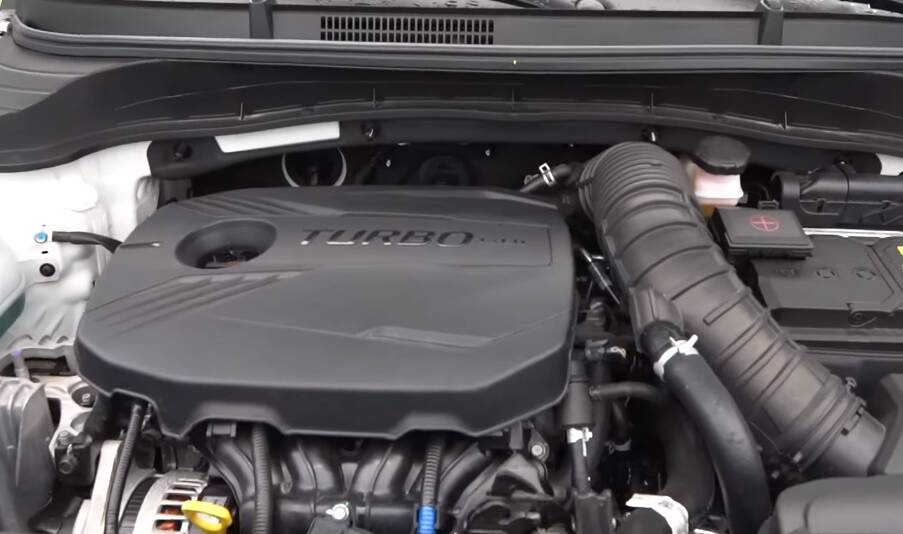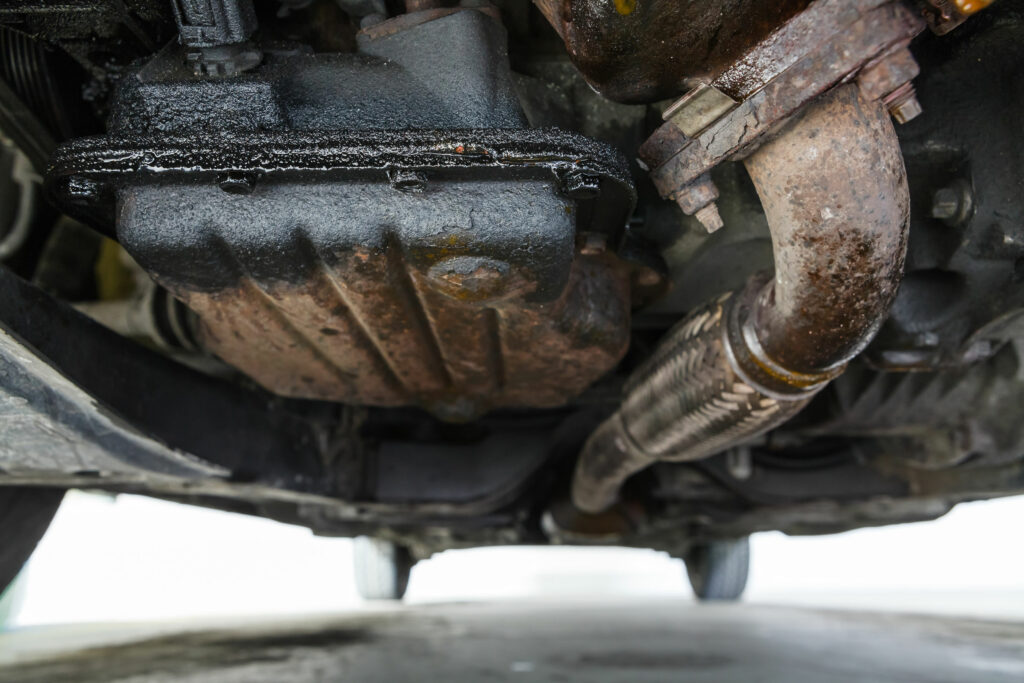
Are you embarking on a journey to buy your very first Kia Soul? Then, you are in the right place! Our blog will assist you in making this crucial decision so that you can invest your money in the right place.
When shopping for a Kia Soul, you probably aren’t looking for a vehicle that can match the speed of a high-performance car, but you do want one with a dependable and secure engine. The data from NHTSA complaints, however, paint a different picture. Problems with the 2020 Kia Soul’s engine and transmission are the primary cause of the alarm.
The Kia Soul’s most typical malfunctions are the engine blowing up, the engine banging, the cruise control surging, and the engine failing altogether.
We would never advise against buying a Kia Soul because these issues are rare and specific to individual vehicles. But if you’re considering purchasing one or currently own one, it’s important to be conscious of the potential problems that could arise.
The Top 10 Most Common Issues With The Kia Soul
Despite the issues we’ve discussed, Kia has done an excellent job of maintaining its reputation for dependability across several Soul generations. However, like any other engine, the Soul is vulnerable to a few standard issues. In addition, while generally reliable, some Kia Soul model years are prone to mechanical failures. Here are some common problems that have been often reported with secondhand Souls, so you know what to look out for if you decide to buy one.
Engine Failure

The 2016 Soul has the highest prevalence of this issue among all Soul model years, while it also affects the 2012 and 2015 models. High exhaust temperatures can damage the catalytic converter in the 2016 Soul, which results in irregular engine combustion. Piston rings, gaskets, seals, and other engine parts may fail, and a fire may even start below the hood.
Drivers will notice the onset of this engine failure around the 70,000-80,000 mile mark. Because it can occur at any time, including when someone is tailgating you on the highway, this kind of unpredictability in engine failure is among the most difficult issues a car can have.
Piston oil rings in Soul models may have yet to be heat-treated per manufacturer standards. As a result, if the piston oil rings become unseated, the engine could sustain damage, resulting in a halted motor. Additionally, it might cause an oil leak, which raises the risk of a car fire if the oil comes in contact with the hot exhaust.
Since crucial systems keep failing, Kia needs to redirect some of its “next-level” expertise into developing better production techniques. So long as that doesn’t happen, the junkyard will continue to fill up with these cars.
Engine Failure Warning Signs
You’ll notice if your engine blows out, but you might need help to figure out what’s wrong immediately. The following are warning indications of an engine failure or blowout:
- White smoke clouds emanated from the hood.
- The tailpipe emits dark smoke.
- Strange, loud banging noises.
- Abrupt slowing down of the vehicle.
Precautions To Prevent Engine Blowouts
While Kia Souls from 2012 to 2016 have their unique causes for their propensity for engine blowouts, it’s important to note these general measures you may take to avoid engine blowouts or failure:
- Never let the oil level get too low; physically check it every 3000 miles.
- Avoid keeping the engine running at high RPMs for extended periods
- When driving, stop right away if you hear any strange knocking noises.
Defective Catalytic Converter
The catalytic converter is one of Kia Soul’s most obvious design flaws. Unfortunately, for the Soul, blown catalytic converters are a typical complaint and a serious problem for the 2014–2015 cars.
The catalytic converter uses a filter of several precious metals to break down nitrous oxide through a chemical reaction. This filter enables the breakdown of hazardous gases into more environmentally friendly compounds.
Catalytic converter defects can result in several other extra issues for the Soul, including fire hazards. It is crucial to unclog the catalytic converter because it can increase back pressure and lower engine performance and efficiency.
Additionally, the converter’s internal metals may burn away, resulting in incorrect gas emissions and unquestionably failing an emissions test.
Signs Of A Faulty Catalytic Converter
Symptoms of a failing catalytic converter include:
- Erratic idle
- Engine stalls
- Extreme exhaust gas temperature levels
- Poor results on the emissions test
- O2 sensor issues
The Kia Soul Is Vulnerable To Fire Risk
The Soul does have a problem with catching fires. The media may draw attention to these cases, increasing public awareness. However, because so many Souls burst into flames, Kia was forced to issue extensive recalls and pay out significant civil settlements.
A man lost his life in August 2020 after a rental Kia Soul caught fire while he was driving. Due to dangerously high exhaust temperatures and malfunctioning catalytic converters that increased the fire risk, Kia recalled 534,000 Souls built between 2012 and 2016.
In addition, Kia was compelled to recall 253,281 additional Soul automobiles made between 2017 and 2019 and 147,249 between 2020 and 2021. Even in 2022, reports of Kia Souls catching fire will sadly continue to surface in the media.
Flimsy Suspension
Drivers of Kia Soul vehicles frequently report various suspension component faults. Initially, the Soul’s rough ride and poor suspensions were so frequently reported that Kia significantly modified the suspension.
However, some parts are more prone to failure than others, including the suspension springs and the front wheel bearings. Additionally, steering pins and tie rod system components might break down, resulting in expensive repairs and ongoing suspension problems.
The Kia Soul isn’t the most relaxing car to drive, but it intends to make up for that with its low price and wide range of useful features.
Red Flags Of Weak Suspension
Some of the telltale signs of a suspension that’s on the fritz are:
- Bouncing and generally bumpy driving conditions.
- Steering problem or drifting when turning.
- Dip while braking.
- When parked, the vehicle leans to one side.
Repairs, however, could be more expensive and time-consuming than anticipated because of the suspension’s numerous expensive components.
Faulty Piston Rings And Connecting Rods
A failing connecting rod or piston ring could have several reasons. Various factors, including poor installation, fuel flooding, worn ring grooves, abrasive engine oil particles, or inappropriate fuel and air mixes, can cause piston ring failure.
Many factors that lead to connecting rod failure are related to excessive mileage and general wear and tear. Connecting rod failure or defects can be caused directly by rod bearing failure and the effects of high speeds on engine pistons. Rod bearing failures typically originate from lubrication issues or incorrect connecting rod installation.
Indications Of A Damaged Connecting Rod
A bad connecting rod may show these signs:
- Reduced oil pressure.
- Increased oil consumption.
- The engine is making a knocking noise.
No matter how tempting it may be, it would be best if you never kept driving with a broken connecting rod. If the engine is not correctly and promptly fixed, it can sustain catastrophic damage quickly.
Defective Piston Ring Signs
The following are some potential signals of a faulty piston ring:
- Poor acceleration and low power.
- Overuse of oil.
- Excess oil consumption.
- Exhaust smoke that is light grey or white.
If worn piston rings aren’t replaced, the oil will leak into the engine’s cylinders, and the oil level will decline. Usually, a wet compression test may identify the problem’s root cause and determine whether or not your piston rings need to be replaced.
Surging Of The Cruise Control
The cruise control surging issue is almost as serious as the crippling, dangerous engine problems that afflicted earlier models. Cruise control surges, brought on by electrical issues, are particularly prevalent in the 2018 Kia Soul.
Owners reported that when the SUV was in cruise control mode, it would suddenly accelerate and then slow down to a crawl. The surge happens when the speed is between 40 and 50 mph, and when it abruptly drops to 3 mph, the car lurches forward.
Strangely, the issue disappears when cruise control is activated. However, despite being a rare problem, the risk brought on by abrupt speed changes makes it important to highlight.
Transmission Problems
In addition to the Kia Soul’s inadequate suspension issues, bumpy transmissions can make driving unpleasant. For any driver, transmission issues may be a major source of frustration. Despite the high cost of associated repairs, it may be challenging to fix a transmission properly due to its complex architecture and several separate components.
Fortunately, many of the gearbox issues with the Kia Soul are not severe. However, it’s crucial to remember that postponing transmission repairs can result in considerably serious issues.
Engine Knocking

Car engines are complicated machines, and every out-of-phase mechanical operation or misaligned component can produce its peculiar thud or click. Engine banging, a sign of impending engine failure, was also common in the Kia Soul model years 2012 to 2016. The 2014 Kia Soul is the model most affected by this defect.
Some Kis Soul owners from the model years 2012 to 2016 have reported hearing weird banging noises emanating from the hood while driving, followed by an abrupt loss of gas pedal action. In addition, some drivers discovered a fire beneath the hood after they stopped. This fault was coupled with a total engine blowout and fire in some situations, but the issues were fixable in others.
What Might Cause Your Engine To Knock
When the engine starts making annoying banging or ticking noises, it’s not fun. Numerous factors might contribute to engine knocking noises. Listed below are a few typical reasons:
- The buildup of carbon in the connecting rods or cylinder walls.
- Erratic combustion timing.
- Using the wrong octane fuel.
- Low-quality fuel.
This knocking problem afflicted the 2014-2015 Kia Soul models and some Sorento, Forte, Forte Koup, Optima Hybrid, and Sportage automobiles.
Clicking Sound On Turning
A defective constant velocity joint (CV joint), responsible for maintaining a force transfer from the steering column to the wheels, is the root cause of the clicking-while-turning issue. According to some owners, a clunking noise in the steering column would appear out of nowhere. Some drivers found that the problem was more apparent while traveling at particular speeds, even though others have reported hearing the sounds when making turns.
A clicking sound occasionally occurs when turning, especially in the 2012 Kia Soul. The sound usually appears after 70,000 miles of driving. Additionally, at faster speeds, the noise is more likely to occur.
Kia identified the problem after learning that employees at a supplier’s South Korean production facility had been using the incorrect adhesive to lock in the thread on a plug that secures a pinion gear to the steering assembly. Due to malfunctioning automobiles, accidents may occur if the plug is jarred loose and the driver loses control of the vehicle. So when turning the steering wheel, if strange clunky noises are coming from your steering rack, be sure to have it checked out as soon as possible.
Oil Leakage

Unfortunately, the Kia Soul joins our growing list of cars prone to oil leak issues. The most direct sign of oil leaks is easily visible oil puddles underneath the vehicle. Furthermore, various oil system components or head gaskets can be nagging sources of oil leak problems.
Practicing timely and high-quality oil changes can significantly deter oil leaks or further high oil consumption issues. For example, if you can smell burnt oil from the engine compartment, the leak is probably coming from the top of the engine and may result from a faulty valve cover gasket.
On the other hand, oil puddles beneath the vehicle are most often the result of an engine-bottom leak. Since many oil pans on Kia Souls leak, inspecting the oil pan for possible leaks or loosenings is crucial.
How To Spot A Kia Soul Oil Leak
Symptoms of a Kia Soul oil leak include:
- The burnt oil smell.
- Oil puddles are accumulating beneath the engine.
- Frequently low oil levels in the engine.
- The block is dripping oil.
- The turbo is spewing oil.
- Inadequate acceleration.
Which Kia Soul Years Should You Avoid?
It’s best to avoid buying a secondhand Kia Soul in the following years if you can:
Kia Soul 2012
According to the experts at Car Complaints, there have been 470 NHTSA complaints against the 2012 Kia Soul, which you should steer clear of. Body integrity issues and flawed safety features were its principal shortcomings.
Clunking noises when turning are this Soul year’s most prevalent problem. Owners have mentioned hearing a clunking or popping sound when rotating the steering wheel. In addition, some owners have heard loud rattles when driving on roads or hitting small bumps.
The 2012 Soul’s unlatched hood while driving is another potential issue. Although this is a rare problem, it poses a serious safety risk, particularly on roads or freeways.
Kia Soul 2013
The 2013 Kia Soul had 495 NHTSA complaints, according to CarComplaints.com. Unfortunately, due to the engine failure problem, which necessitates an expensive fix, this year is worse than the 2012 edition.
Several owners of the 2013 Soul have suffered engine failure, which has been known to occur at roughly 85,000 miles or more. Some users reported hearing a banging sound emanating from the engine, while others just experienced an engine failure. The expected fix for this issue is to replace the engine, which runs a hefty $5,000.
A few owners reported that their Soul’s engine had started to make a ticking noise, which is less serious. However, the ticking noise, which may be mildly bothersome to frighteningly loud, compels owners to visit their nearby Kia dealership. Sadly, with an average repair cost of $4,100, we cannot recommend the Soul model year.
Kia Soul 2014
Regarding customer dissatisfaction, the 2014 Kia Soul takes the cake. With over 900 reported issues, the 2014 Soul is unquestionably one of the worst models of the Soul to purchase. Like the 2013 Kia Soul, the 2014 model receives a pitiful 1 out of 5 stars from Consumer Reports.
According to a number of Consumer Reports owners, one of the 2014 Soul’s most serious problems is engine failure. This issue appears to be connected to the faulty oil pump in the Soul, which results in higher-than-normal oil consumption by the engine. One owner said the car began requiring a quart of oil every 300 miles.
The horrible engine ticking/knocking noise that plagued the 2013 model year returns with the 2014 Soul. The initial diagnosis by technicians is that this occurs at about 105k miles and is caused by low oil.
Kia Soul 2015
The 2015 Kia Soul is another vehicle to avoid because of its high number of customer complaints (more than 700 at the NHTSA) and the four recalls it has received. In addition, the 2015 model of the Soul has numerous engine problems, just like the other problematic Souls on our list.
Engine failure is the issue that needs to be addressed first. Around 80k miles is the typical mileage at which this problem appears. Many customers have noted that the engine initially made knocking or ticking noises or began to burn more oil. The Soul’s engine finally just stopped working. In this case, costs associated with repairing or replacing the engine amount to around $4,620.
Excessive oil use is another area of concern. The engine guzzles oil like nobody’s business when it is working properly.
Kia Soul 2016
Even though it doesn’t have the most complaints, CarComplaints.com names the 2016 Soul as the worst model year; the dreaded engine failure is the main offender.
The number one issue with the 2016 Soul, measured by the severity scale, is a blown engine. According to several accounts, the 2016 Soul’s engine is prone to blowing up, particularly after 90k miles. It is dangerous, and an engine replacement will cost you almost $7,000.
Additionally, Kia Soul owners complained that their cars wouldn’t start. Again, indicators point to a possible battery problem, but those complaining need to know why.
Which Kia Soul Models Are Secure To Purchase?
We have covered the worst Kia Soul model years to avoid and will move on to the best model years to buy.
Kia Soul 2011
Among all Kia Soul years, the second generation is among the most dependable. An adaptable, reasonably priced, and all-around useful compact SUV is the 2011 Soul. Car Complaints awarded the 2011 Soul a “Pretty Good” Seal of Approval for dependability, stating that it is “pleasant to drive, roomy, and trustworthy.”
Kia Soul 2018
The 2018 Soul features a huge luggage area, a roomy interior, a fast turbocharged engine, and top-notch reliability ratings. The 2018 Soul received a fantastic Quality & Reliability score from J.D. Power of 84 out of 100.
Kia Soul 2019
The 2018 Soul features a huge luggage area, a roomy interior, a fast turbocharged engine, and top-notch reliability ratings. The 2018 Soul received a fantastic Quality & Reliability score from J.D. Power of 84 out of 100.
Reliability Of The Kia Soul
Many drivers may encounter most of the abovementioned issues, yet the Soul is still a solid choice for a reliable daily driver. These problems are frequently the result of insufficient maintenance or long-term high mileage. In light of its affordability, a Soul is a viable alternative for a daily driver. However, each of the several Kia engine configurations does have a design error.
As a result, the Kia Soul reliability rating ranges from ordinary to above average. However, it’s crucial to remember that these factors affecting the Soul’s reliance mainly depend on appropriate upkeep and repairs.
The Kia Soul’s Resale Value
One of the best SUVs for maintaining value is the Soul. With a fashionable appearance, an affordable price, and up to 61% of the residual value after five years, it truly has it all.
A Kia Soul starts at roughly $19,000, with the most costly models costing up to $26,000. This table illustrates Kia Soul’s current resale value for each model year since 2005 and the vehicle’s mileage.
| Model Year | Mileage | Current Cost |
| 2021 | 8,255 | $25,699 |
| 2020 | 26,974 | $22,999 |
| 2019 | 27,099 | $20,999 |
| 2018 | 79,786 | $14,999 |
| 2017 | 79,457 | $14,990 |
| 2016 | 47,886 | $16,499 |
| 2015 | 47,261 | $15,999 |
| 2014 | 126,071 | $8,999 |
| 2013 | 123,381 | $9,988 |
| 2012 | 119,469 | $8,499 |
| 2011 | 80,565 | $13,990 |
This informative table must have improved your understanding of Kia Soul’s resale value.
The Kia Soul: Pros And Cons
If properly maintained, the Kia Soul is dependable and has a 200,000-mile lifespan. Despite its unusual design, the Kia Soul has some benefits.
However, the Kia Soul has issues due to its odd design.
Pros
- The Soul’s sitting is very adjustable, making it very user-friendly.
- It has a boxy, roomy shape that is cosy and open.
- Because of its body shape, it has a high safety rating.
- The infotainment system’s dashboard and screen are aesthetically pleasing and technologically up-to-date.
- Optional turbocharged motor.
Cons
- Due to the Soul’s non-aerodynamic design, it gets less gas mileage than a similar subcompact SUV.
- With 100 to 200 horsepower, engines could be more powerful.
- Unlike many SUVs, rear seats do not fold flat to increase load room.
Final Reflections
While driving a 2012–2016 Kia Soul won’t put you at immediate risk; it wouldn’t hurt to wait as long as possible before making the purchase.
Engine trouble could happen at any time.
But don’t worry too much; the vehicle has an NHTSA (National Highway Traffic Safety Administration) rating of four out of five stars.




